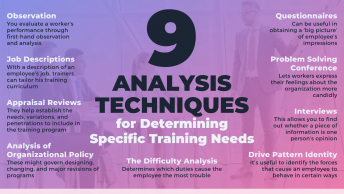The startup of a telemarketing program, no matter how big or small, represents a major milestone in any sales-oriented organization. It signals the organisation’s decision to leap into the future. A well thought-out telemarketing plan results in a successful program and improved sales.
• What is Telemarketing?
The very first step, a starting point, is to make sure that you fully understand what telemarketing is and what its limitations are in respect to your organization. An accepted definition of telemarketing is ‘ the planned use of the telephone to assist in the sales of your products or services.’ Another definition is ‘ using the telephone for marketing purposes, especially to make appointments with potential buyers to discuss with them new business situations and opportunities.’ It should be viewed as an important part of your overall sales and marketing strategies.
There is a difference between telephone selling and telemarketing. Telephone sales can be summed up as only one part of telemarketing having as a sole purpose to sell over the telephone. Telemarketing is a process, and it is distinguished by three key characteristics.
– It is planned
– It is continuous
– It is integral to an overall marketing programme
• Know Your Telemarketing Plan
In thinking about your telemarketing plan you will have to recognize two important elements that are necessary for the program to be successful.
A. The market in which you intend to sell. It is necessary to identify and fully understand and target your market. According to Thomas Prizio, President of the Global Telemarketing, California, there are four product / market combinations. They are:
1. Current Market / Current Product
2. New Product / Current Market
3. Current Product / New Market
4. New Product / New Market
The toughest of all to sell is the New Product / New Market. The second is the Current Product / New Market. New Product/Current Market is easier and Current Product / Current Market is the easiest to sell. It is important to understand these levels of sales difficulty when you consider the potential costs and estimated results of your telemarketing program.
Depending on where your selling activity will fall in this group, your costs can be relatively high or low. You must weigh the costs of telemarketing against other selling channels such as direct selling, field sales or electronic / print media.
B. The offer or what you want to sell. You can have the best product or service on the market, but unless you get the attention of the potential buyers, you will not be able to sell to them.
• Using the Telephone
The telephone can be used for more than selling. It can be utilised :
– To provide information
– To gather information
– To sell a product / service
– To provide customer service
– To generate and qualify leads
Some of these functions can be considered as sales support functions. Remember this as you identify your target markets and plan your telemarketing strategy.
• How to Reach Your Target Markets?
The best way to reach your target markets is by using telephone lists. Telephone lists are either response lists or compiled lists. A response list is an active list of people who have already been contacted and have responded to an offer via direct response, commercials, television, etc., which would make them a prime market for your company’s products or services. Do not overlook your current or past customers who may be very good buyers for what you are selling. Response lists can also be generated from in-house program respondents.
Compiled lists are the companies or individuals who have met certain qualifications or demographics that fit into a general population and not necessarily into your exact target market. A distinction ( which will help you in assessing your needs ) is the response list is considered an active list while the compiled list is a passive list. The decision on which list to use should depend on your knowledge of the market. Also, the quality of the list you use will have a direct effect on the success of your telemarketing program.
• The Sales Process
The following are important elements of the sales process:
– Initial introduction
– Establishing the needs of the prospect
– The follow-up phone call, letter or visit
– Initiation of the sale
– Listening to the prospect’s objections
– Clarifying the prospect’s objections and understand what they need
• Your Telemarketing Program & Sales Process
Telemarketing is not meant to stand-alone. The main source of communication is the telephone that is solely dependent on the excellence of a voice message. The listener cannot see the body language, facial expressions, or illustrations used in advertising or print, and it is up to the telemarketer to prove his or her credibility.
Most products or services are sold today using these four elements:
1. Conversation or discussion; buyers are told about the product or service.
2. Demonstration of the benefits of the product or service,
3. Illustration of the product or services and its features and benefits.
4. Finally there’s the credibility of seeing the product or service in person.
The telephone, as a medium of selling, can provide only one of these elements, and that is conversation.
• The Script
Experienced telemarketing organisations agree that the best guarantee of consistent quality in any telemarketing program is using a well-designed script. For a script to be successful, you must first establish what your goal will be.
If your goal is to get an appointment with the potential prospect, then your script must be written in such a way that you have a reasonable chance of getting an appointment.
If the goal is to sell a product or a service, then the script must be written in that context, remembering that it is very difficult to sell over the telephone to a prospect who knows nothing about you or your organisation.
In order to be successful, you have to get a response to what you have to offer. This depends on these four elements.
1. Product or services
2. Price of the product / services
3. How the customer receives the product or service and
4. How you receive payment for your product or service.
You can reduce the buyer’s fears by offering attractive sales terms. This can be done with guarantees, easy return policy, credit facilities options, quick delivery, attractive product or service and a competitive price.
There are three basic types of telemarketing scripts.
A. The verbatim script is one that is followed word-for-word. This is best used for the business-to-consumer buyers. In this situation, it is recommended that the message lasts no longer than three to four minutes and contain up to 350 to 450 words. These scripts require little or no response from the prospect and will include closed-ended as well as probing questions.
An example of a verbatim scrip used to sell business office equipment for the ABC company:
• Hello, Mr. (name), I am Ahmed from the ABC Company. I am calling you today because we have some very good ideas on how one of our (machine type) can increase your office productivity, efficiency and improve your profitability.
• Mr. (name) I would be happy to have one of our representatives come by your office to share these cost-saving ideas with you. What would be the best time for you, morning or afternoon ?.
• Mr. (name) our sales executive, Riaz Ahmed will be at your office on (day) at (time). Please call me at (phone number) if there is any time change.
B. The guided script is the second level of scripting. It is less restrictive and allows the telemarketer to adjust the conversation according to the responses received from the prospect. This type of scripting is recommended for business-to-business situations.
This method can work with the business-to-consumer situation if more probing is needed to determine the interest level of the prospect. Guided scripts can last up to six minutes and can require up to 750 words. Experienced telemarketers best use this type of guided script.
The purpose of a successful telemarketing is to reach the decision-makers. You can waste a lot of time by not speaking to the right person. This can be avoided by simply asking the person ( to whom you are speaking ) if he is the decision-maker in this situation. If he is not, then you must determine who is and pursue that person.
Here is an example of a guided script used by a visual products sales company, Visual Images, specializing in transparencies for meetings and presentations:
• (Operator answers.) Hello, I would like to speak to the one who buys transparencies for overhead projection. Who is that person, please? ( Gets his name and correct spelling ).
• Hello, Mr. (name), I am Ahmed from Visual Images. We specialize in overhead projection equipment and supplies. Are you the person who buys or determines the overhead equipment or transparencies ? ( If no, gets correct name and title ) If yes:
• Fine, Mr. Ali; our organization has been known for its one-stop shopping advantages for companies such as yours. Most of the companies in this area use our high-quality products. We offer three benefits to our valued customers: quality products, excellent service and competitive prices. Sound interesting ? ( Get response )
• My call can be very timely for you because we have a special offer consisting of a 15% discount, extended payment terms and a free laser pointer for first-time buyers. Can I ask you a few questions about your current needs ? If yes —– Thank you, Mr. Ali; first I would like to know how many boxes of transparencies you are currently using each month…
C. The outline script is considered to be the most difficult type of scripting. This method is used in business-to-business calling. Outline scripts consist of words and ideas in outline form, and require five to ten minutes.
An example of an outline script used by a trading company enables the caller to be more flexible in his qualification process.
• Hello, Mr.(name), I am Ahmed from the General Trading Company. Have you received a letter from our sales manager, Mr. Omer Khan ?
• (Letter received or not) Well, as stated in his letter we have the ….
– best products,
– competitive prices,
– quick delivery,
– monthly selection of office supplies,
– discounts, and
– a generous exchange policy.
• As an added incentive, Mr. Omer Khan wants you to know about:
– Special Offers,
– Quantity Discounts,
– Incentives for buying in quantity, ( etc.)
• Telemarketing Tips
Research before you solicit, make sure your leads are qualified.
Start at the top. They will filter you down to the correct person, and then you can use their name to open doors.
Make friends with the person who answers the phone. They are the gatekeepers to the decision-maker. Know their name, show them respect. Use them for gathering information; they have a lot of company knowledge.
Make sure you present to the right person. Simply ask, “Are you the person who makes the final decision?” If they’re not the right person, ask for the name and number of the decision-makers. Ask if anyone else will be involved in the decision-making. Contact that person as well.
Before you sell, establish a rapport with the buyer. Know and understand the person you are selling to, ask questions and actively listen to his response.
Don’t expect a buyer to buy without knowing who you are and liking you.
Mirror the person you are talking to. Identify their style of personality and follow it.
Ask questions and identify your prospect’s needs and buying motives.
Respond to their needs with the benefits your product or service offers.
Listen. Listen … and actvely Listen !
Deal with objections. Don’t give up. Handled effectively, objections can help close a sale. If you truly believe you can benefit a company, overcome their objections with the benefits you have to offer.
Persistence and patience pays !
Always follow-up. And follow-up when you say you are going to. Stay in control of the sale–” I will call in two days.”
Close and don’t forget to ask for the sale.
Ask for referrals.
When you are preparing to write your own script, you must remember the goal that you have established. Your script must be written in such a way to help you achieve that goal. Your script should include the following points:
– Introduce yourself and your company: Who? What? Where?
– Establish the needs for your product or service
– Answer the needs and sell your benefits
– Initiate a trial close — initiate a response
– Handle objections
– Close the deal
• Telemarketing Program
You are now ready to begin your telemarketing self-training. Remember that telemarketing is a people business. You are depending on you or your staff to convince the person on the other end of the telephone to purchase a product or service, set up an appointment or supply you with information.
The recognized, most important quality that a telemarketer must possess is a good telephone voice — defined as one that is enthusiastic, confident, mature and controlled. You should look for a voice with a high degree of speech refinement, but it does not have to be the voice of an announcer. Personal traits to look for are previous sales experience and a desire to do a good job. If the candidate has had experience influencing others in the past, consider that a plus point.
If you are hiring a staff to telemarket for you, finding the right people for your team will take some effort on your part. Once you have determined the type person you need and what you are willing to pay, the next step is to recruit them. The easiest way to find people is to use classified advertising. Carefully word your ad and do something special to make it stand out on the page. Selected typefaces for the headline, borders around the ad or even a second color will work for you.
In the ad, you must tell the reader who you are. Let them know that you are a leader in the industry, have credibility, are growing, and state what the rewards will be. A sample is elaborated hereunder :
BE A PLAYER ON A WINNING TEAM AND SHARE IN THE PROFITS !
We are a Training Company that has been in the consumer products business for 15 years, and we are still growing! Here is an opportunity for you to become involved in a new direct-marketing adventure with many rewards for the right people.
If you have (qualifications), we are ready to welcome you. You will get an attractive base salary, the best benefits package in the industry, training and incentives. Send your resume to:
Name, (or no name), Address, etc.
When you have had a chance to review the resumes, it would be a good idea to telephone your top choices and see how they handle themselves on the telephone. You will get a good idea about their abilities, voice quality and interest.
It is better to invest a few minutes of your time on the telephone rather than a lot of time face-to-face if they are not going to work out.
Whether you are the person doing the telemarketing or will hire others to do it, some training is required before anyone gets on the phone. You must teach or learn basic techniques such as tone of voice, rate of speech, volume and how to listen.
In addition to these items, telemarketers must learn the “big three” of telemarketing calls — beginning, body, and ending. The beginning of a call is the first twenty to thirty seconds that is, by far, the most important part of the call. This is where the interest level of the listener is set. If the prospect is not “motivated” in the first twenty to thirty seconds, they are lost for good. Body of the call, also known as the dialogue phase, is used to ask questions and determine the prospect’s needs. The ending, or close, is where the needs of the prospect are satisfied.
The following are the eight parts of a telemarketing call that can be refined and will lead to a higher degree of success:
1. The caller must introduce himself and your company. This is a must because this creates the first impression in the mind of the prospect. Done correctly, this leads to credibility.
– Hello, Mr. (name), my name is Ahmed from the XYZ Company….
2. An engaging statement will get the prospect’s attention. The focus here is on the telemarketer and not on the company or the product / service.
– We’re excited about an announcement that our president made today…
– I don’t know if you saw our special offer in the newspaper today…
3. A focus shift takes place next from the telemarketer to the product or service. This is a benefit-oriented section where the telemarketer tells the prospect WIIFM : what’s in it for them.
– We have a product (service) that we think will benefit your life…
– We have had a tremendous amount of success with our new and improved…
4. The telemarketer wants to gain information at this point and the probing begins. There are two types of questions that are used: open-ended and closed-ended. Open-ended question allows the prospect to give as much information as they want. The closed-ended questions can be answered in one or two words.
– Tell me about your photocopying machine ? What kinds of problems have you had with it ?…( open-ended )
– What make of photocopier do you own ? …( closed-ended )
5. In order to clarify and understand the response, the telemarketer should rephrase the answer given to him by the prospect .
– Now you said that while you are somewhat satisfied with the way your machine operates, you feel the speed could be a little better ?…
6. Telemarketer is now ready to present the features and benefits of his product to the prospect.
– Mr. Khan, using our new product, you will not only increase the speed of your photocopier, but you will see an improvement in the performance as well…
– People who have bought our new photocopying machine feel that they have increased efficiency at a fraction of what their old costs were…
7. Prospect may raise objections and the best way of handling them is to determine the “whats” and “whys” of the objections.
– Now let us see. You did say that you are unhappy with your machine speed …
– OK, you think that the price is not matching with what you are getting ?
8. The end or closing are the final parts of the telemarketer’s call. Telemarketing experts agree that a close should never be attempted if there is an objection that has not been answered. There are three types of closings:
a. The direct close — this is best used if the prospect has been responding positively throughout the call. (May I take your order?)
b. The assumed close — the prospect asks if the machine comes in different sizes. (Yes we do have it in small, medium and large sizes; which one would you like me to demonstrate ?….)
c. The contained choice close. If the client has not yet made up his mind, the telemarketer will used it. (If we deliver the machine by January 15 morning, who will be there at your office there to receive it ?)
After the telemarketers have been trained and their work begins, telephone monitoring by an experienced supervisor is very important.
It is through monitoring that management can suggest changes in the telemarketer’s delivery, or identify parts of the process that must be reviewed. The better trained the staff is, the greater the results.
What you should look for in monitored calls are:
1. The most important part of the call is the beginning. As stated before, this may make or break the sale.
2. In training, the voice is probably the easiest part of the presentation to teach. Its importance in making that first impression cannot be stressed enough.
3. Rate of speech is critical. It cannot be so fast that it is incomprehensible nor so slow that it is boring. The accepted rate of speech in telemarketing is 180 words a minute or 3 words a second.
4. The tone of voice is the perceived personality of the telemarketer. It also indicates mood and confidence in the product / service. In training, a good practice is to tape record the training calls so you can listen to the tone without any change in facial expressions, body language, etc. The caller does not have the benefit of these clues and neither should you.













